Last month, I explained why avoiding spinal flexion is so important to protect a spine with osteoporosis or low bone mass and I outlined specific ways to improve our postural alignment. But how do we protect our backs while picking something up off the floor? Or lifting groceries out of the car?
In this post, I describe spine sparing strategies for everyday activities to maximize safety.
Squats: A Body Mechanics Essential



Squats are a fundamental human movement, that many have lost and need to relearn. The key is to keep your spine in a neutral position by “hinging” from your hips, moving your hips backward, and keeping your shins vertical.
The Dowel Test
Many physical therapists use this “test” as a training tool to acquire proper form as you learn to squat. You can use a dowel, a yardstick, or any similar item. Use your hands to hold it in place along your entire back. Ideally, you’ll feel three points of contact: the back of your head, your upper back, and the lower end of your spine. Maintain these contact points as you practice your squat.
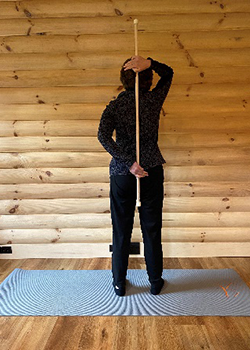
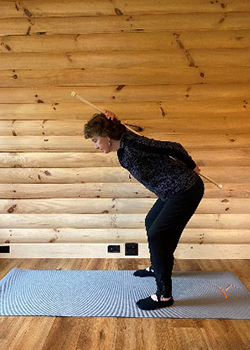
Incorporate the Squat Technique into Everyday Activities Such As:
Getting up and down from a chair. (Please make sure the chair is stable and won’t slide away!)
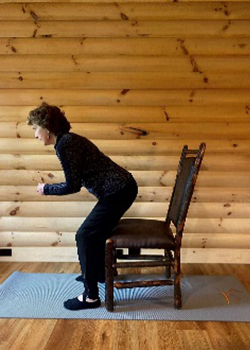
Lifting objects off the floor.
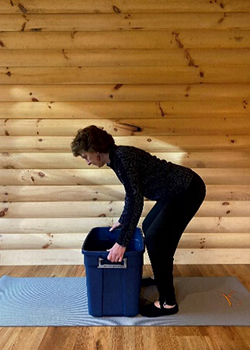
Don’t Rush the Squat
The depth of your squat is dependent on your hip, knee, and back strength and flexibility. Regular, frequent practice of a partial, pain-free squat is the way to begin.
“Do it Right and Prevent Fractures!”
The American Bone Health organization has many free, downloadable materials. The example shown below exemplifies the topic of this post.
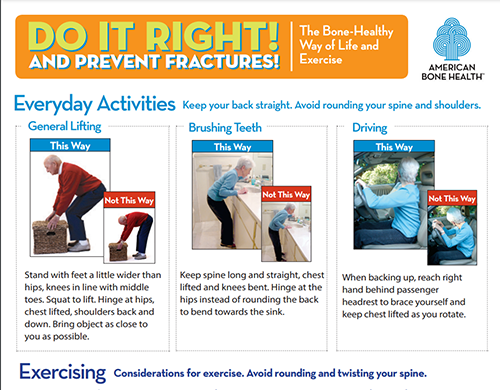
I hope to see you in Strong Bones class where we always focus on posture and safe strengthening exercises – including squats!

